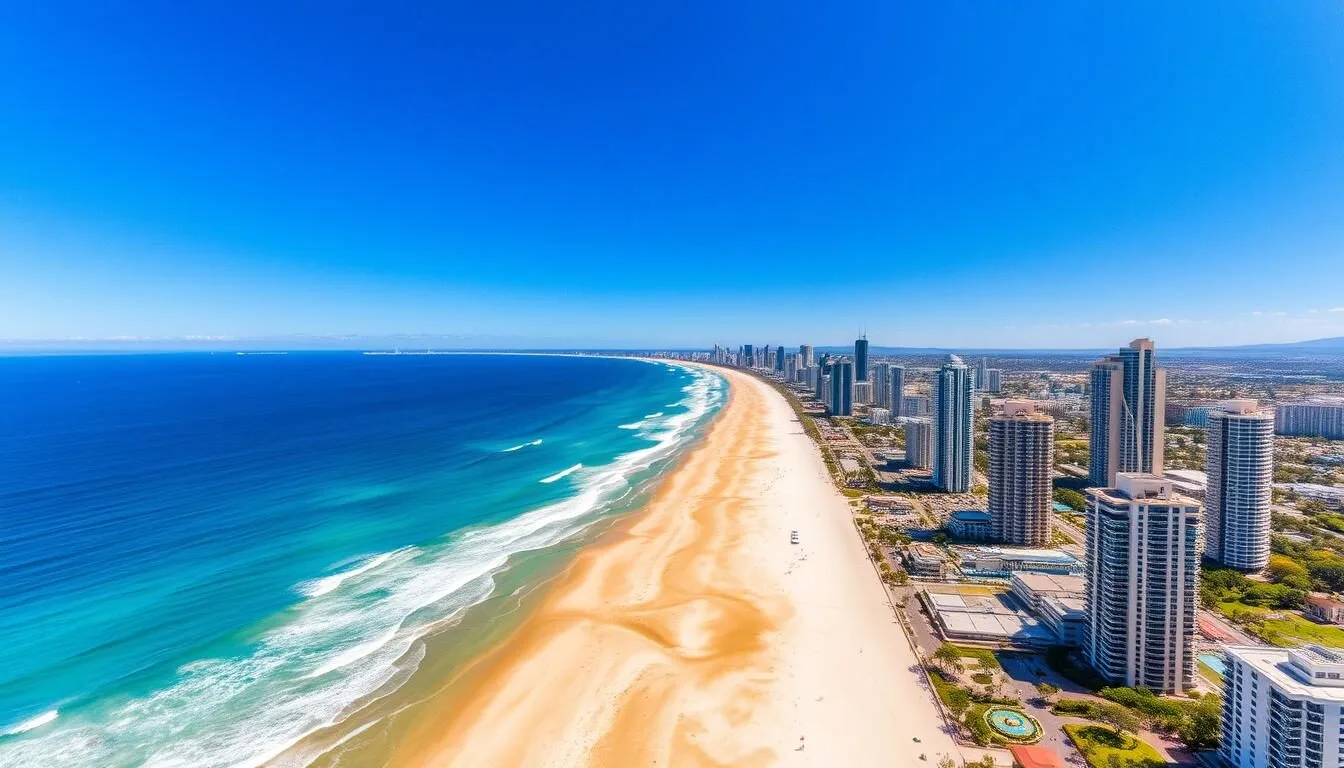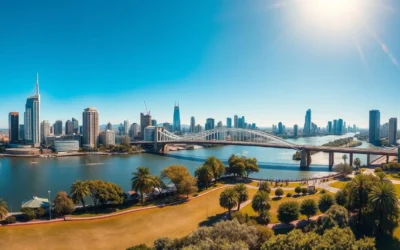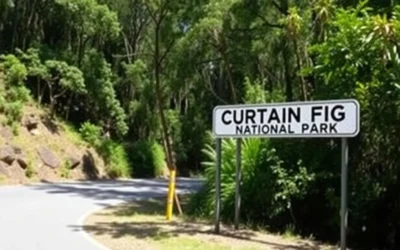Did you know the Gold Coast enjoys over 300 days of sunshine annually? That’s more than most Australian cities, making this Queensland paradise a year-round destination. However, timing your visit can make the difference between perfect beach days and dodging tropical downpours. This comprehensive guide breaks down the Gold Coast’s subtropical climate patterns to help you plan the ultimate weather-savvy trip to this stunning coastal region.
Getting There & Planning Your Journey
The Gold Coast is serviced by Gold Coast Airport (OOL) in Coolangatta, approximately 30 minutes south of Surfers Paradise. International visitors can fly directly to Gold Coast Airport or connect via Brisbane International Airport, located about 80 km (50 miles) north. Finding the right flights during optimal weather periods can significantly enhance your Gold Coast experience.
Travel Tip: If you’re planning to visit during peak season (December-January or school holidays), book your flights and accommodations at least 3-4 months in advance to secure the best rates and availability.
Brisbane is also a major cruise port, making the Gold Coast accessible as a shore excursion or pre/post-cruise stay. Consider exploring cruise options that include Queensland in their itineraries for a unique approach to visiting the region.
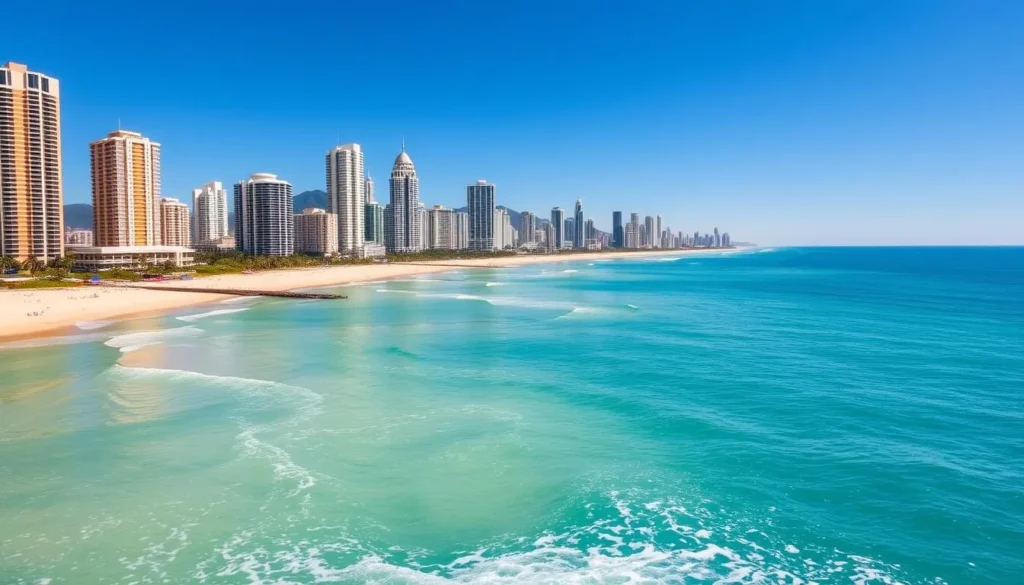
Best Time to Visit & Weather Tips
The Gold Coast enjoys a subtropical climate with warm, humid summers and mild, dry winters. While the region is blessed with sunshine year-round, certain periods offer more favorable conditions depending on your preferred activities.
“The ideal time to visit Gold Coast Queensland is during autumn (March-May) and spring (September-November) when temperatures are pleasant, humidity is lower, and rainfall is minimal.”
These shoulder seasons provide the perfect balance of warm days ideal for swimming and outdoor activities, without the extreme humidity of summer or the crowds of peak holiday periods. Winter (June-August) offers mild, sunny days perfect for exploring, though ocean temperatures may be cooler for swimming.
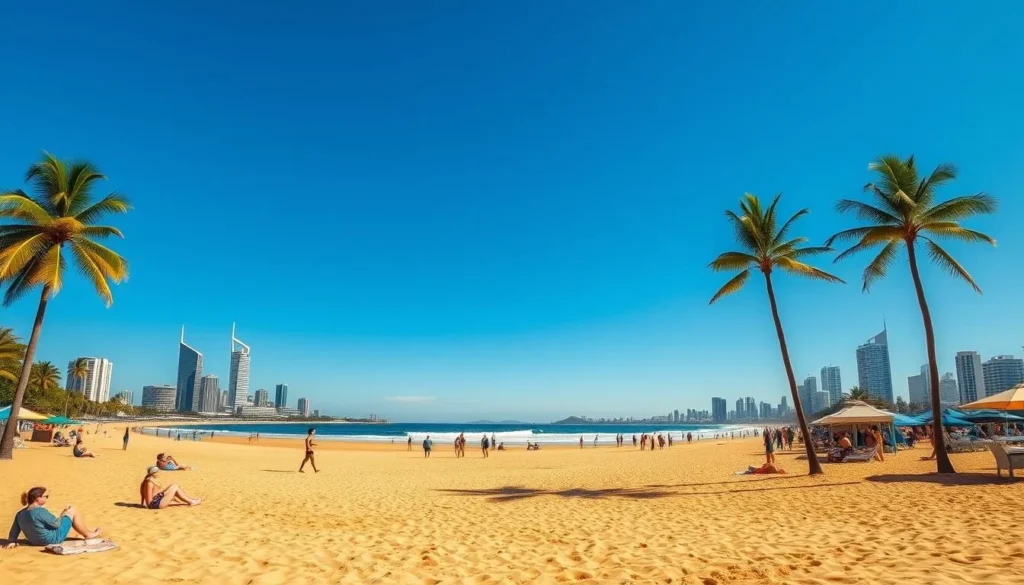
Month-by-Month Gold Coast Weather Guide
| Month | Weather | What to Wear | Things to Do | Pros & Cons |
| January | 28-29°C (82-84°F) High humidity 131mm rainfall | Light clothing, swimwear, hat, sunscreen | Beach activities, water parks, indoor attractions | ✅ Warm water temperatures ❌ High humidity ❌ Crowded beaches ❌ Risk of afternoon storms |
| February | 28-29°C (82-84°F) High humidity 177mm rainfall | Light clothing, swimwear, rain gear | Indoor attractions, morning beach visits | ✅ Warm water temperatures ❌ Highest rainfall ❌ Humid conditions ❌ Afternoon storms common |
| March | 27-28°C (81-82°F) Moderate humidity 104mm rainfall | Light clothing, light layers for evenings | Beach activities, surfing, hiking | ✅ Less crowded ✅ Warm water ✅ Decreasing humidity ❌ Some rainfall possible |
| April | 25-26°C (77-79°F) Lower humidity 123mm rainfall | Light layers, swimwear, light jacket for evenings | Beach activities, hinterland exploring, outdoor dining | ✅ Pleasant temperatures ✅ Less crowded ✅ Good swimming conditions ❌ Some rainy days |
| May | 23-24°C (73-75°F) Lower humidity 117mm rainfall | Light layers, jacket for evenings | Hiking, theme parks, beach walks | ✅ Comfortable temperatures ✅ Less crowded ✅ Good deals on accommodation ❌ Cooler evenings |
| June | 21-22°C (70-72°F) Low humidity 116mm rainfall | Layers, light jacket, swimwear | Whale watching, hinterland exploring, shopping | ✅ Whale watching season begins ✅ Clear, sunny days ✅ Low humidity ❌ Cooler water temperatures |
| July | 21°C (70°F) Low humidity 47mm rainfall | Layers, jacket for mornings/evenings | Whale watching, hiking, theme parks | ✅ Peak whale watching ✅ Lowest rainfall ✅ Sunny, clear days ❌ Cooler for swimming |
| August | 21-22°C (70-72°F) Low humidity 60mm rainfall | Layers, light jacket, swimwear | Whale watching, national parks, outdoor activities | ✅ Excellent whale watching ✅ Low rainfall ✅ Sunny days ❌ Cooler water temperatures |
| September | 23-24°C (73-75°F) Low humidity 44mm rainfall | Light layers, swimwear | Beach activities, hiking, outdoor dining | ✅ Warming temperatures ✅ Lowest rainfall ✅ Whale watching ✅ Spring blooms |
| October | 25°C (77°F) Moderate humidity 100mm rainfall | Light clothing, swimwear, hat | Beach activities, surfing, outdoor adventures | ✅ Pleasant temperatures ✅ Good swimming conditions ✅ Less crowded ❌ Increasing rainfall |
| November | 26-27°C (79-81°F) Moderate humidity 125mm rainfall | Light clothing, swimwear, hat, sunscreen | Beach activities, water sports, outdoor dining | ✅ Warm temperatures ✅ Good before summer crowds ✅ Warm water ❌ Increasing humidity |
| December | 28-29°C (82-84°F) High humidity 143mm rainfall | Light clothing, swimwear, hat, sunscreen | Beach activities, water parks, Christmas events | ✅ Festive atmosphere ✅ Warm water temperatures ❌ Peak tourist season ❌ Higher prices ❌ Afternoon storms |
Color Key:
🟢 Green – Best time to visit (March-May, September-November)
🟡 Yellow – Good time with some limitations (June-August)
🔴 Red – Less ideal time (December-February)
Season-by-Season Gold Coast Weather Breakdown
Summer (December-February)
Weather: Hot and humid with temperatures between 21-29°C (70-84°F). Highest rainfall of the year, especially in February.
What to Wear: Light, breathable clothing, swimwear, hat, sunglasses, and high SPF sunscreen.
Things to Do: Early morning beach activities, water parks, indoor attractions, evening dining.
Pros: Warm ocean temperatures, vibrant atmosphere, extended daylight hours.
Cons: High humidity, afternoon thunderstorms, crowded attractions, peak pricing.
Summary: Best for those who don’t mind heat, humidity, and occasional rain in exchange for warm water and lively atmosphere.
Autumn (March-May)
Weather: Pleasantly warm with temperatures between 15-28°C (59-82°F). Gradually decreasing humidity and rainfall.
What to Wear: Light layers, swimwear, light jacket for evenings.
Things to Do: Beach activities, surfing, hiking in the hinterland, outdoor dining.
Pros: Comfortable temperatures, fewer crowds, warm ocean, better accommodation rates.
Cons: Some rainfall in March, cooler evenings by May.
Summary: One of the best times to visit with ideal balance of warm days, lower humidity, and fewer tourists.
Winter (June-August)
Weather: Mild, sunny days with temperatures between 12-22°C (54-72°F). Low humidity and minimal rainfall.
What to Wear: Layers, light jacket, warmer clothes for evenings.
Things to Do: Whale watching, hiking, theme parks, shopping, exploring the hinterland.
Pros: Clear, sunny days, excellent whale watching, lowest rainfall, good deals on accommodation.
Cons: Cooler ocean temperatures, chilly evenings.
Summary: Perfect for outdoor activities and whale watching, though swimming may be less appealing.
Spring (September-November)
Weather: Warming temperatures between 15-27°C (59-81°F). Gradually increasing humidity.
What to Wear: Light clothing, swimwear, hat, sunscreen.
Things to Do: Beach activities, water sports, hiking, outdoor dining.
Pros: Pleasant temperatures, good swimming conditions, fewer crowds (until late November).
Cons: Increasing rainfall and humidity as summer approaches.
Summary: Another excellent time to visit with warm days, comfortable humidity levels, and good ocean temperatures.
Best Time to Visit Gold Coast, Queensland
Best Times to Visit
- March to May (Autumn) – Warm days, lower humidity, fewer crowds
- September to November (Spring) – Pleasant temperatures, good swimming conditions
- June to August (Winter) – For whale watching and outdoor activities (though cooler)
Times to Avoid
- Late December to January – School holidays, crowded, expensive
- February – Highest rainfall and humidity
- Australian school holidays – Crowded attractions and higher prices
Ready to experience the Gold Coast’s perfect weather?
Book your flights during the ideal seasons for the best experience!
Getting Around Locally
The Gold Coast has an excellent public transportation system, making it easy to explore the region without a car. The G:link light rail connects major areas from Broadbeach to Helensvale, while Translink buses cover broader areas including theme parks and hinterland connections.

For maximum flexibility, especially when exploring the hinterland or more remote beaches, consider renting a car. This allows you to visit areas like Springbrook National Park or Tamborine Mountain at your own pace. Rental cars are readily available at both Gold Coast and Brisbane airports.
Transportation Tip: The go card is a reloadable smart card that can be used on all TransLink bus, train, ferry and tram services. It offers cheaper fares than paper tickets and is the most convenient way to get around.
Where to Stay
The Gold Coast offers accommodation options to suit every budget and preference. Your choice of location should consider both the weather during your visit and your preferred activities.
Surfers Paradise
The bustling heart of the Gold Coast with high-rise hotels and apartments. Perfect for first-time visitors who want to be close to beaches, nightlife, and shopping.
Best for: Beach lovers, nightlife enthusiasts, and those who don’t mind crowds.
Weather consideration: Can feel more humid in summer due to urban heat.
Broadbeach
A more relaxed alternative to Surfers Paradise with excellent dining options, shopping centers, and beautiful beaches.
Best for: Families, couples, and those seeking a balance of convenience and tranquility.
Weather consideration: Good sea breezes help moderate summer heat.
Gold Coast Hinterland
Mountain retreats in areas like Mount Tamborine or Springbrook offering cooler temperatures and natural surroundings.
Best for: Nature lovers, those seeking cooler weather, and romantic getaways.
Weather consideration: 3-5°C (5-9°F) cooler than the coast, ideal in summer.
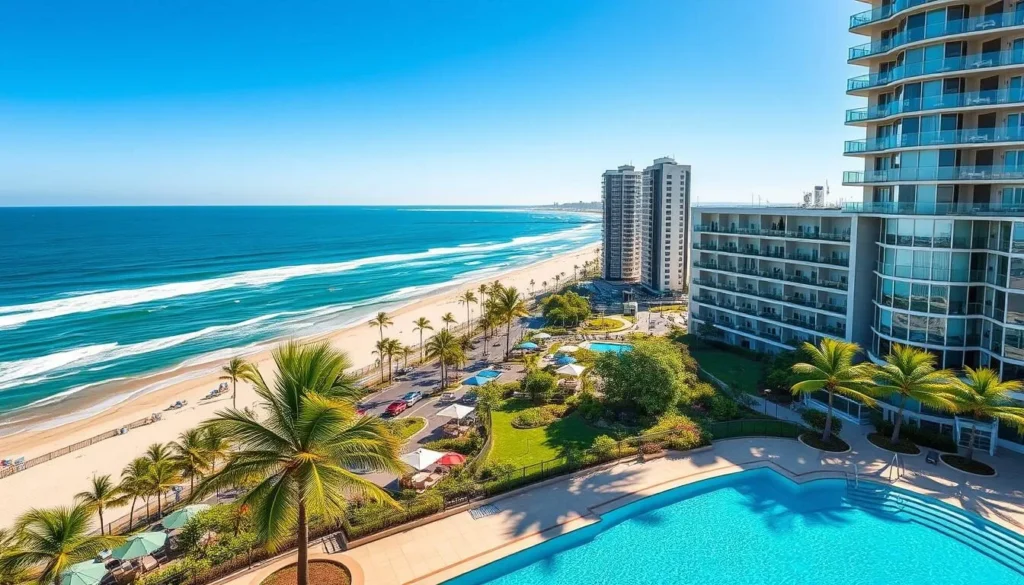
Find Your Perfect Gold Coast Stay
Book accommodation that matches your preferred climate and activities!
Dining & Local Cuisine
The Gold Coast’s dining scene has evolved dramatically in recent years, offering everything from casual beachside cafés to world-class restaurants. The subtropical climate influences both the available produce and dining styles throughout the year.

Seasonal Dining Experiences
Summer & Spring
- Beachfront Dining – Early morning breakfasts or evening meals to avoid midday heat
- Seafood – Fresh local catches including Moreton Bay bugs, prawns, and reef fish
- Tropical Fruits – Mangoes, pineapples, and passionfruit feature prominently on menus
- Cold Treats – Gelato shops and açaí bowls are perfect for hot days
Autumn & Winter
- Hinterland Dining – Winery restaurants and farm-to-table experiences
- Food Markets – Miami Marketta and Night Quarter offer vibrant atmospheres
- Comfort Foods – Restaurants offer heartier options during cooler months
- Coffee Culture – Explore the excellent café scene, especially in Burleigh Heads
Dining Tip: During peak summer season (December-January), make dinner reservations for popular restaurants at least a week in advance, especially for beachfront venues with outdoor seating.
Attractions, Sightseeing & Activities
The Gold Coast offers a diverse range of activities that can be enjoyed year-round, though some are better suited to specific seasons. Planning your activities according to the weather will ensure the best experience.
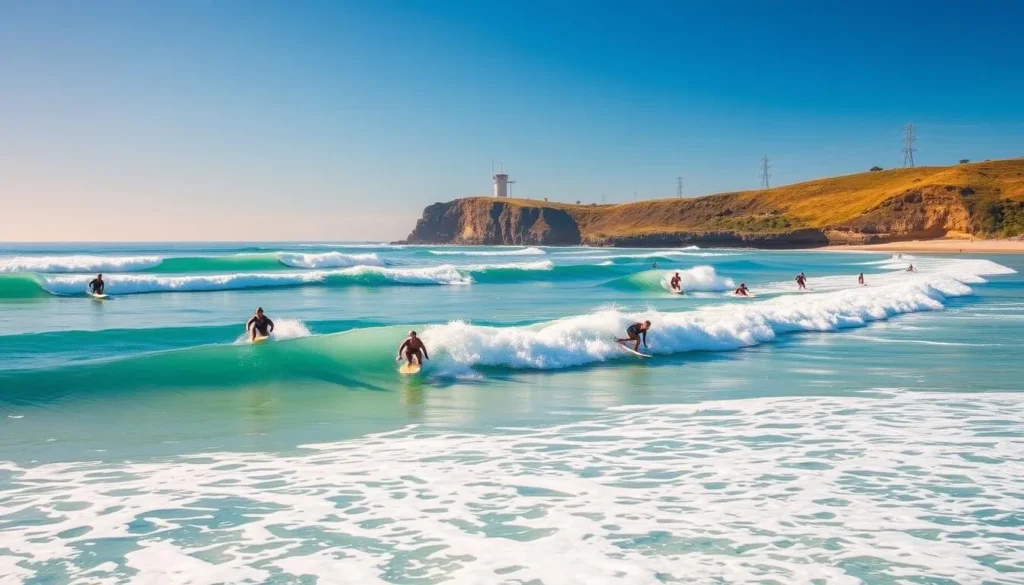
Weather-Optimized Activities
Best in Summer (Dec-Feb)
- Early morning beach swims
- Water parks (Wet’n’Wild, WhiteWater World)
- Indoor attractions during afternoon heat
- Evening wildlife viewing at Currumbin Sanctuary
- Air-conditioned shopping at Pacific Fair
Best in Autumn/Spring (Mar-May & Sep-Nov)
- Theme parks (Movie World, Sea World, Dreamworld)
- Surfing lessons at Surfers Paradise
- Hiking in Springbrook National Park
- Tamborine Mountain Glow Worm Caves
- SkyPoint Observation Deck
Best in Winter (Jun-Aug)
- Whale watching tours
- Hot air balloon rides over the hinterland
- Wine tasting in Mount Tamborine
- Natural Bridge and glow worm viewing
- Lamington National Park walks
Experience Gold Coast’s Best Activities
Book tours and activities that match the perfect weather conditions!
Museums, Cultural Spots & Festivals
The Gold Coast offers more than just beaches and theme parks. Its cultural scene has grown significantly, with museums, galleries, and festivals that showcase both indigenous heritage and contemporary Australian culture.

Seasonal Festivals & Events
| Season | Festival/Event | Location | Weather Considerations |
| Summer (Dec-Feb) | New Year’s Eve Celebrations | Surfers Paradise | Evening events to avoid daytime heat; possible rain |
| Autumn (Mar-May) | Blues on Broadbeach | Broadbeach | Perfect outdoor festival weather |
| Autumn (Mar-May) | Gold Coast Film Festival | Various venues | Mix of indoor/outdoor events in ideal conditions |
| Winter (Jun-Aug) | SWELL Sculpture Festival | Currumbin Beach | Clear days perfect for outdoor art viewing |
| Spring (Sep-Nov) | Gold Coast 600 Supercars | Surfers Paradise | Warming temperatures ideal for outdoor events |
Year-Round Cultural Attractions
- HOTA (Home of the Arts) – Contemporary gallery and performance spaces
- Jellurgal Aboriginal Cultural Centre – Indigenous heritage and guided tours
- Gold Coast City Gallery – Regional art collection
- Miami Marketta – Food and design market with live music
- Dracula’s Cabaret – Theatrical dining experience
Sports, Nature & Outdoor Experiences
The Gold Coast’s subtropical climate makes it perfect for outdoor activities year-round, though certain seasons offer optimal conditions for specific experiences. From world-class surfing to rainforest hikes, the region’s diverse landscapes provide endless opportunities for adventure.
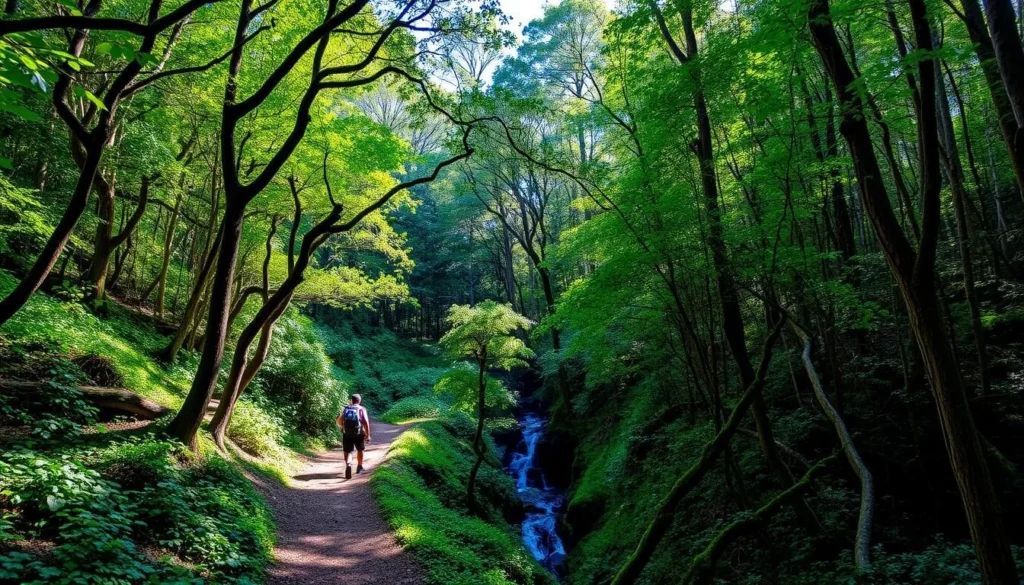
Seasonal Outdoor Activities
Water Activities
- Surfing – Best conditions in February-May (cyclone swells) and August-November (consistent breaks)
- Swimming – Ocean temperatures range from 21°C (70°F) in winter to 27°C (81°F) in summer
- Whale Watching – June to November, with peak season in August-September
- Jet Boating – Year-round, but more comfortable in autumn and spring
- Stand-Up Paddleboarding – Calm waters of Currumbin Creek and Tallebudgera Creek are best in early morning
Land Activities
- Hiking – Hinterland trails are most comfortable in winter and spring
- Mountain Biking – Nerang State Forest trails are best in autumn and winter when less muddy
- Golf – Year-round, but autumn and spring offer most comfortable temperatures
- Hot Air Ballooning – Winter mornings provide the clearest views
- Bird Watching – Coombabah Wetlands are excellent in spring for migratory birds
Safety, Etiquette & Local Customs
Understanding local safety considerations, especially those related to weather conditions, will help ensure a smooth and enjoyable Gold Coast experience.
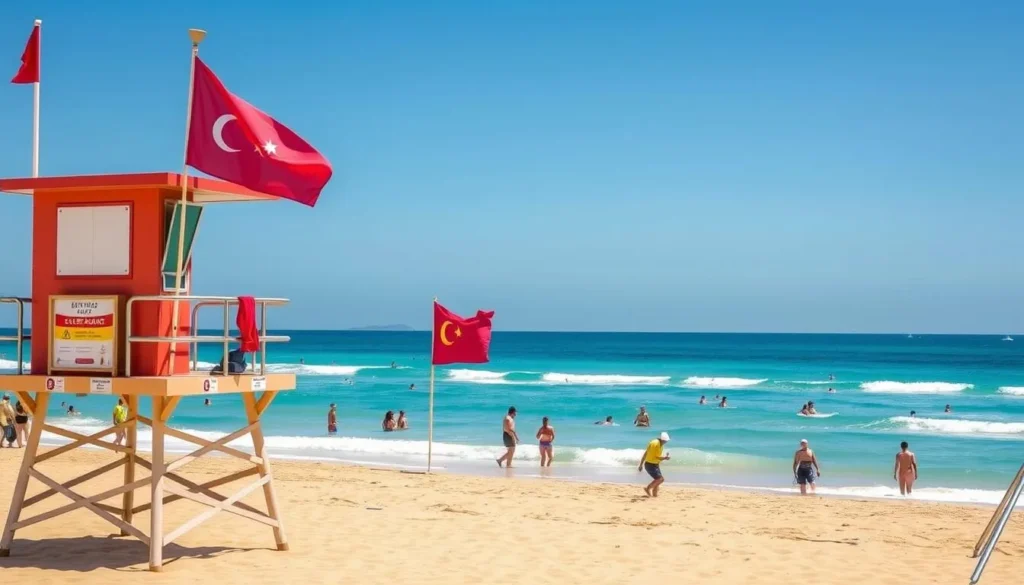
Weather-Related Safety Tips
- Sun Protection – The Queensland sun is extremely strong. Wear SPF 50+ sunscreen, reapply every 2 hours, and seek shade between 10am-3pm.
- Swim Between the Flags – Always swim at patrolled beaches between the red and yellow flags.
- Marine Stingers – During summer months (November-May), be aware of bluebottles (Portuguese man-o-war) that can wash up on beaches.
- Hydration – Summer humidity can cause rapid dehydration. Carry water at all times.
- Storm Awareness – Summer thunderstorms can develop quickly. Check weather forecasts and seek shelter when storms approach.
Practical Travel Tips
- Dress Code – Casual attire is acceptable almost everywhere. Smart casual for upscale restaurants.
- Tipping – Not expected in Australia, but appreciated for exceptional service (10-15%).
- Water – Tap water is safe to drink throughout the Gold Coast.
- Wildlife – Don’t feed wild birds or animals, especially at beaches and parks.
- Reef Protection – Use reef-safe sunscreen when swimming in natural waterways.
Your Perfect Gold Coast Weather Window
The Gold Coast truly shines during autumn (March-May) and spring (September-November) when temperatures are pleasant, humidity is lower, and rainfall is minimal. These golden windows offer the perfect balance for enjoying both the stunning beaches and lush hinterland. Winter (June-August) brings whale watching opportunities and clear, sunny days, while summer (December-February) delivers the warmest ocean temperatures despite higher humidity and rainfall.
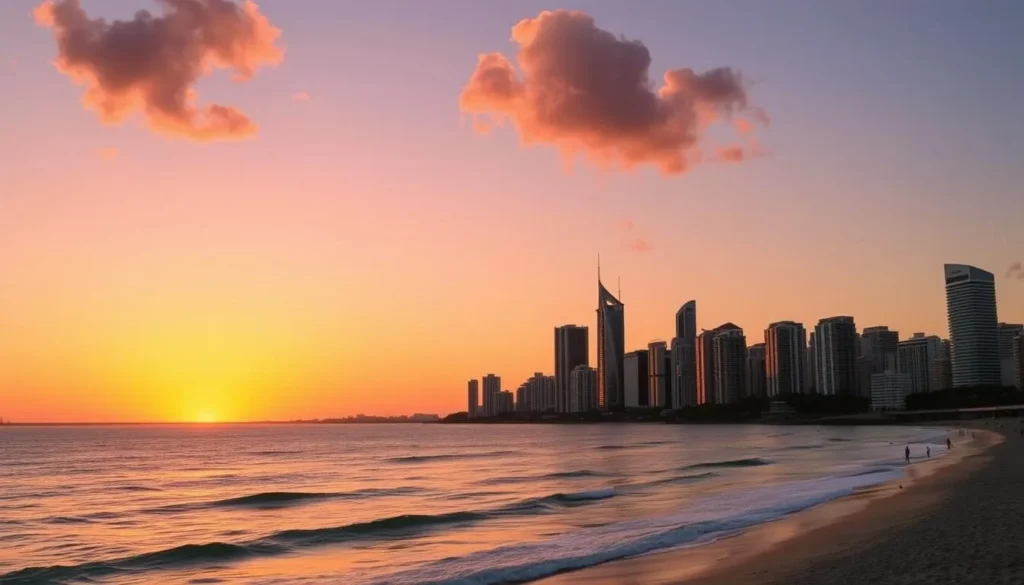
With this weather-savvy guide in hand, you’re now equipped to plan the perfect Gold Coast getaway that aligns with your preferred activities and comfort level. Whether you’re seeking the perfect surf conditions, whale watching adventures, or simply want to lounge on sun-kissed beaches without the crowds, timing your visit right is the key to an unforgettable Queensland experience. Pack your bags, book your flights, and prepare to discover why the Gold Coast’s subtropical climate makes it one of Australia’s most beloved year-round destinations!
Ready for your Gold Coast adventure?
Start planning your weather-perfect trip today!
The above is subject to change.
Check back often to TRAVEL.COM for the latest travel tips and deals.
